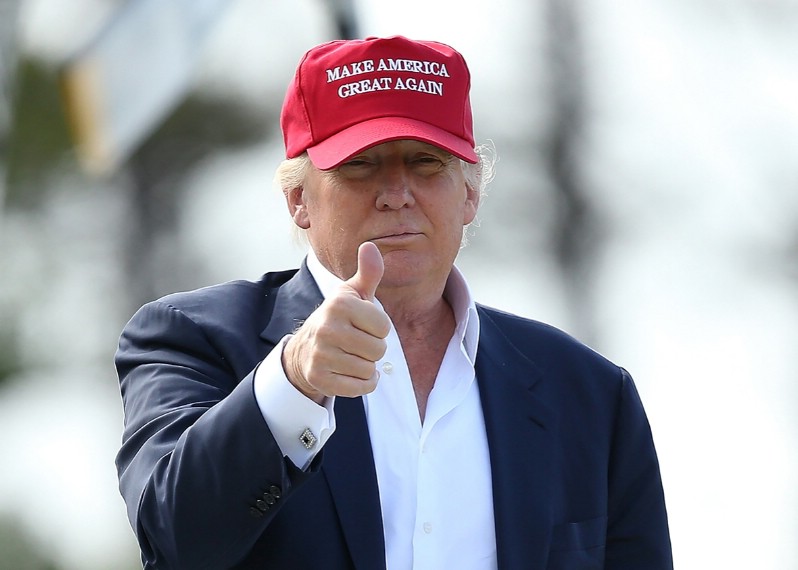Hiring accelerated and pay rose at a solid pace in April, setting the stage for healthy U.S. economic growth to endure despite fears of a slowdown earlier this year.
Employers added 263,000 jobs, with the unemployment rate dropping to a five-decade low of 3.6% from 3.8%, though that drop partly reflected an increase in the number of Americans who stopped looking for work. Average hourly pay rose 3.2% from 12 months earlier, matching March’s year-over-year increase.
Friday’s jobs report from the government showed that economic growth remains brisk enough to encourage strong hiring nearly a decade into the economy’s recovery from the Great Recession. The economic expansion, which has fueled 103 straight months of hiring, is set to become the longest in history in July.
“All of the recession talk earlier in the spring was much ado about nothing,” said Gus Faucher, chief economist at PNC.
Trump administration officials insisted that the job market’s gains were a result of the president’s tax cuts and deregulatory policies.
“We have entered a very strong and durable prosperity cycle,” said Larry Kudlow, director of the White House’s National Economic Council.
We can all agree that AMERICA is now #1. We are the ENVY of the WORLD — and the best is yet to come! pic.twitter.com/Uc81DzHbu2
— Donald J. Trump (@realDonaldTrump) May 3, 2019
President Donald Trump has also pressed the Federal Reserve to cut short-term interest rates because inflation remains low. But most economists said the healthy jobs picture, against the backdrop of low inflation, would reinforce the Fed’s current wait-and-see approach. The Fed raised rates four times last year but has signaled that it doesn’t foresee any rate increases this year.
Investors welcomed the April jobs data by sending stock prices broadly higher. The Dow Jones Industrial Average closed up 197 points, or 0.75%.
Jason Guggisberg, vice president of Adecco USA, a staffing firm that finds temporary and permanent hires for business clients, said companies are doing much more to attract workers. They are offering more perks — like free lunches or weekly happy hours — and allowing more flexible work schedules.
Some are also raising pay, though Guggisberg said many of them have to be persuaded to do so. Adecco often has to show its clients data about how many jobs are available in a given area and how few workers are actually searching for jobs.
“We are constantly having conversations with clients about supply and demand” and reminding them that most applicants have multiple job opportunities, he said. “Two years ago, I don’t know that I ever had that conversation.”
The brightening economic picture represents a sharp improvement from the start of the year. At the time, the government was enduring a partial shutdown, the stock market had plunged, trade tensions between the United States and China were flaring and the Fed had just raised short-term rates in December. Analysts worried that the economy might barely expand in the first three months of the year and might even tip into recession in the ensuing months.
Yet the outlook soon brightened. Chair Jerome Powell signaled that the Fed would put rate hikes on hold. Trade negotiations between the U.S. and China made some progress. The economic outlook in some other major economies improved. Share prices rebounded.
And in the end, the government reported that the U.S. economy grew at a 3.2% annual rate in the January-March period — the strongest pace for a first quarter since 2015. That said, the growth was led mostly by factors that could prove temporary — a restocking of inventories in warehouses and on store shelves and a narrowing of the U.S. trade deficit. By contrast, consumer spending and business investment, which more closely reflect the economy’s underlying strength, were relatively weak.
But American households have become more confident since the winter and are ramping up spending. Consumer spending surged in March by the most in nearly a decade. A likely factor is that steady job growth and solid wage increases have enlarged Americans’ paychecks.
Businesses are also spending more freely. Orders to U.S. factories for long-lasting capital goods jumped in March by the most in eight months. That suggested that companies were buying more computers, machinery and other equipment to keep up with growing customer demand.
Years of steady hiring have sharply lowered unemployment for a range of population groups. The unemployment rate for women fell last month to 3.1%, the lowest point since 1953. The rate for Latinos dropped to 4.2%, a record low since 1973, when the government began tracking the data.
For Asians, joblessness has matched a record low of 2.2%. And the unemployment rate for veterans of the Iraq and Afghan wars dropped to 1.7%, also a record low.
Most of last month’s job growth occurred in services, which includes both higher-paying jobs in information technology and lower-paying temporary work. Manufacturers added just 4,000 jobs. Construction firms gained 33,000, mostly on public infrastructure projects.
Professional and business services, which include IT networking jobs as well as accountants and engineers, led the gains with 76,000. Education and health care added 62,000 jobs, while a category that mostly includes restaurants and hotels gained 34,000.
Retailers, however, continued to cut jobs, shedding 12,000 in April, the third straight months of cuts. The sector has eliminated 49,000 jobs in the past year even as the economy has picked up.
Retailers are suffering from broader changes in the economy as more Americans are shopping online and stores close after decades of overexpansion. Also to blame is an aging U.S. population that no longer needs to buy as much clothing and other goods.
(AP)












One Response
“Many businesses say they’re struggling to find workers, yet each month they seem to add a substantial number. Some have taken a range of steps to fill jobs, including training more entry-level workers, loosening educational requirements and raising pay sharply.”
Now the media will accuse him of creating too many jobs.